A Perfect Day in Iceland: Hiking Thingvellir and the Reykjadalur Valley

With an early arrival into Keflavik, Myles and I arrived in Iceland at five in the morning. As with my latest trip to Japan, the plane, a Boeing 757, parked on the tarmac away from the terminal. Since there was no jet bridge, buses were required to reach a nearby terminal. I was in the rear of the plane, which meant I was on the last bus. Myles and I met in the arrival terminal, and waited together in line for the immigration checkpoint. The line moved faster than expected, and we were both through within minutes with fresh arrival stamps in our passports.
Once through customs, Myles and I went to pick-up the keys for the vehicle we rented. Through a company called Europcar, I reserved a Suzuki Jimny. Unfortunately, upon arrival, the Europcar worker said no automatic versions of the Jimny were available. Instead, Myles and I received a Mitsubishi Eclipse. It was not the same style of vehicle but it had an automatic transmission and four-wheel drive. After I signed for the vehicle, Myles and I left the airport to locate the vehicle in an adjacent lot. The SUV was new, and to my surprise, was a hybrid.
Unlike in 2018, Myles and I were unable to take the scenic route along the coast to the south of the airport to reach Rejykvaik. Due to recent volcanic activity in the region, the town of Grindavik and nearby roads were closed off. The Blue Lagoon was open to the public but Myles and I skipped the lagoon as we had lost a complete day due to the flight delay. We took the highway into Rejykvaik, which was busier than I remembered from the past trip. Once at the hotel, our plan was to unpack, shower, and go straight out to Þingvellir National Park after we changed.
Reykjavik Lights
The hotel, Reykjavik Lights, was located on the eastern side of Rejykvaik. From the airport, the drive took forty minutes. Myles and I stayed at the hotel in 2018, and were familiar with the area. As Myles and I had paid for our rooms in advance, the check-in process was quick. Unfortunately, unlike the earlier stay, our rooms faced the opposite side of Rejykvaik. My view was of nearby buildings instead of Mount Esja. The room, however, was immaculate as before with a full-size couch and large bed. My favorite aspect of the room was the sizeable bathroom, which had a heated towel rack and a walk-in rainfall style shower.
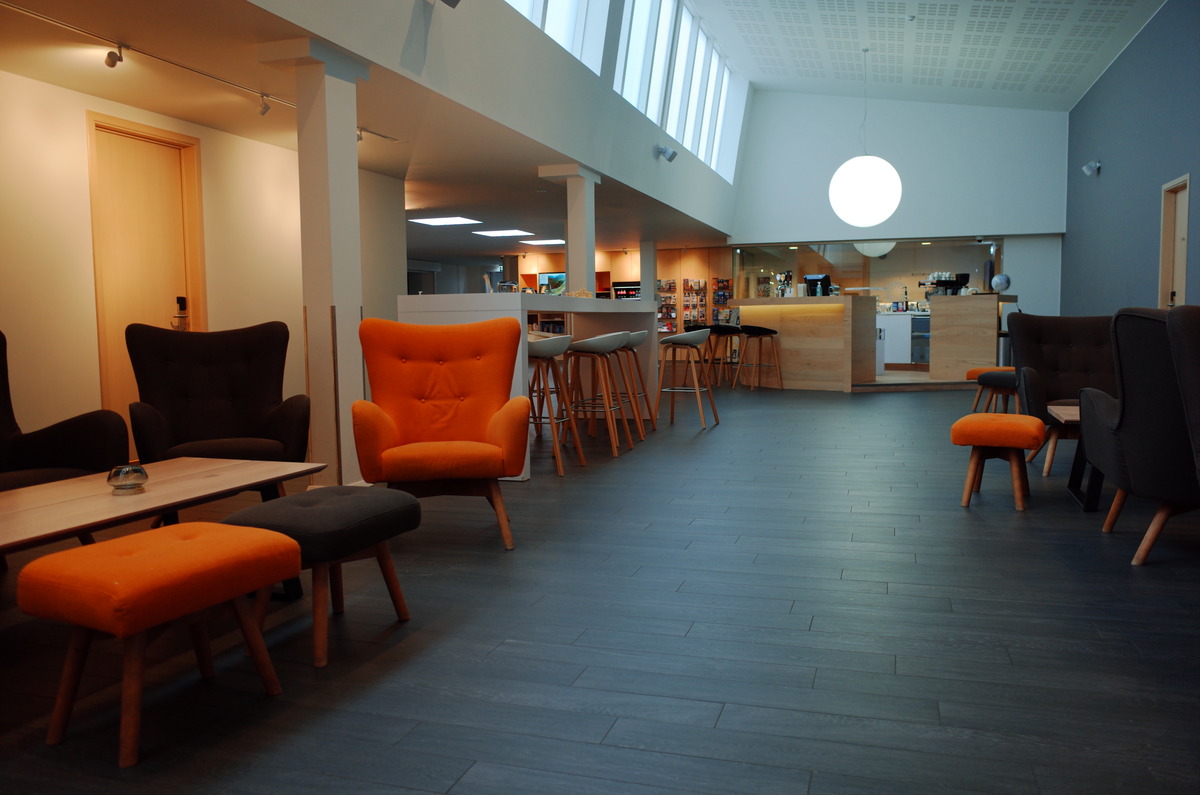
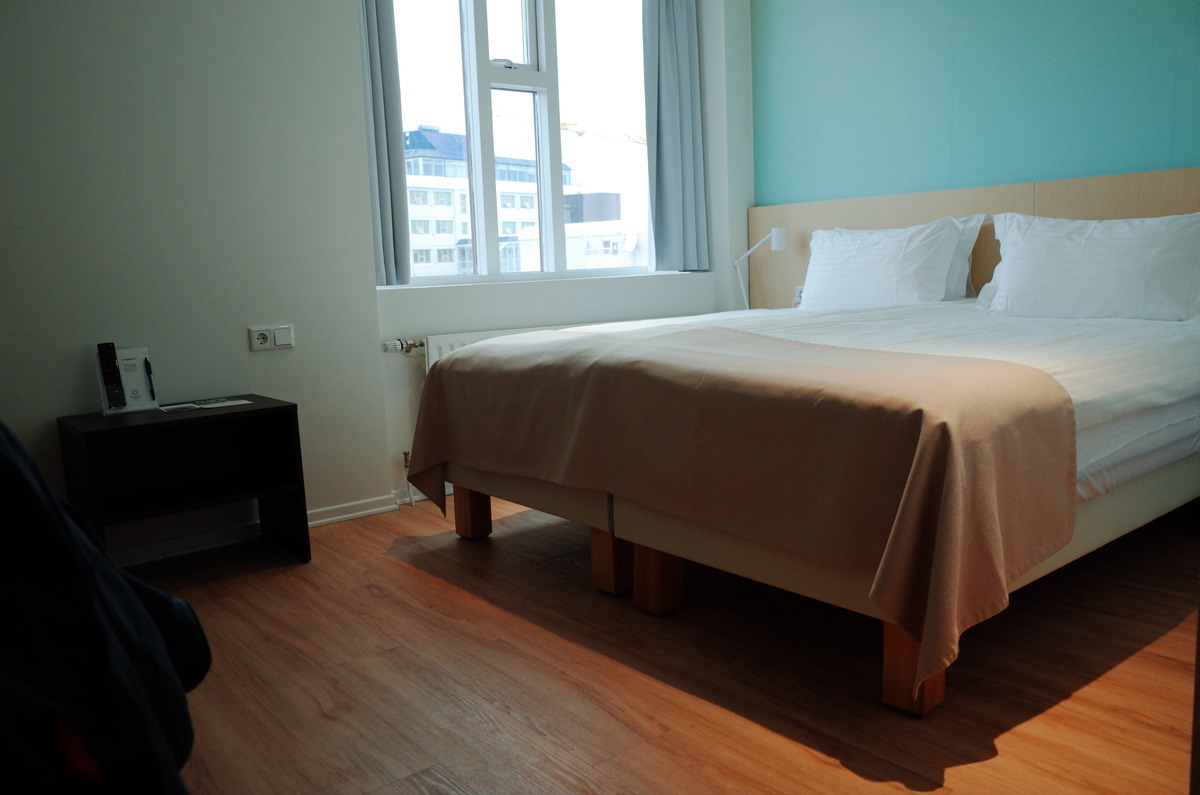
Þingvellir National Park
After a shower, I unpacked my bag and changed into my hiking clothes. Myles, in an adjacent room, did the same. We met in the hallway and took the stairs to the front entrance of the hotel. Once in the rental vehicle, I typed Þingvellir National Park into the onboard GPS. From the hotel, Þingvellir was less than an hour away. The drive took us along multi-lane highways until Myles turned off on a two-lane road away from the city. On this road, Myles and I drove for miles without another vehicle in sight. As the national park neared, Myles pulled off the highway for an overlook which provided a panoramic view of Lake Þingvallavatn.
Myles and I took in the view of the lake, and afterwards, we drove the rest of the way to Þingvellir National Park. We arrived to a parking lot crammed with campers, SUVs, cars, one olive green Suzuki Jimny, and a tour bus. The fee to park was 1,000 Icelandic Króna, or seven dollars. After I paid the fee at an automated machine in the parking lot, Myles and I walked to the eastern half of the park to reach Öxarárfoss. The waterfall, surrounded by moss-covered rocks and lush greenery, had a constant source of water from the Öxara river. From atop a nearby boulder, I took time to photograph Öxarárfoss and the rapid runoff downstream.
From Öxarárfoss, Myles and I walked to the Hakid viewpoint on the western half of Þingvellir. The gravel path snaked through the main fault line of the park, known as Almannagja. The jagged walls of mossy rock towered above us, pockmarked with fissures, and the odd hole in which birds nested in. Halfway to Hakid, I stopped on a bridge to record the sound of the Öxara river below with a field recorder I kept in a fanny pack. I attached a synthetic fur windscreen to the recorder to dampen wind. With a pair of in-ear headphones, I adjusted the level of gain until I was satisifed. It was a delicate process, which took me away from the present.
At the Hakid viewport, Myles and I had a panoramic view of the lower half of the Öxara river and Lake Þingvallavatn. The lake, with distant mountains, was dotted with lush inlets and keys. After Myles and I took photographs of the lake, we stepped into the nearby gift shop behind the viewpoint. The shop sold cheaply made souvenirs, along with drinks and junk food. I bought an electrolyte drink and a pack of gummies. Afterwards, Myles and I returned to the rental car. We took a minute to punch in the GPS coordinates for the Reykjadalur valley. As we did, two vehicles parked across the sole exit of Þingvellir. Myles had to reverse the vehicle and go out the entrance. It was a mad house.
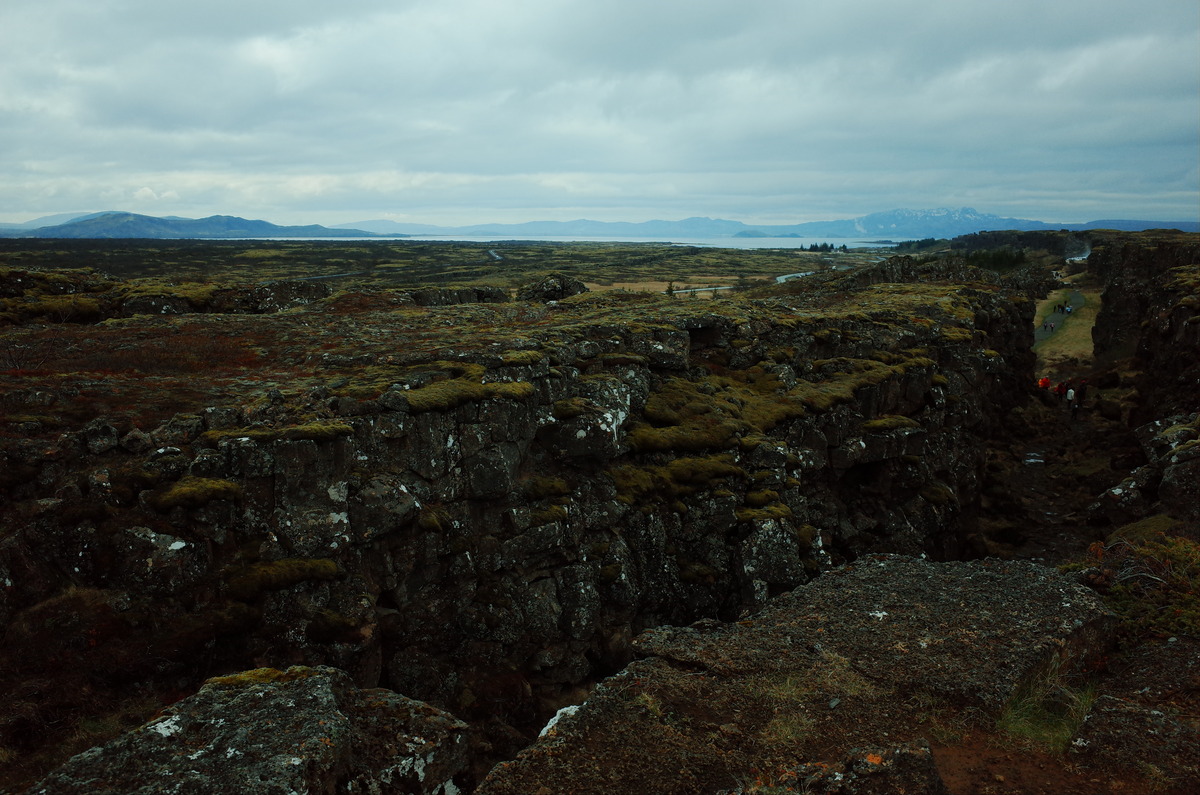
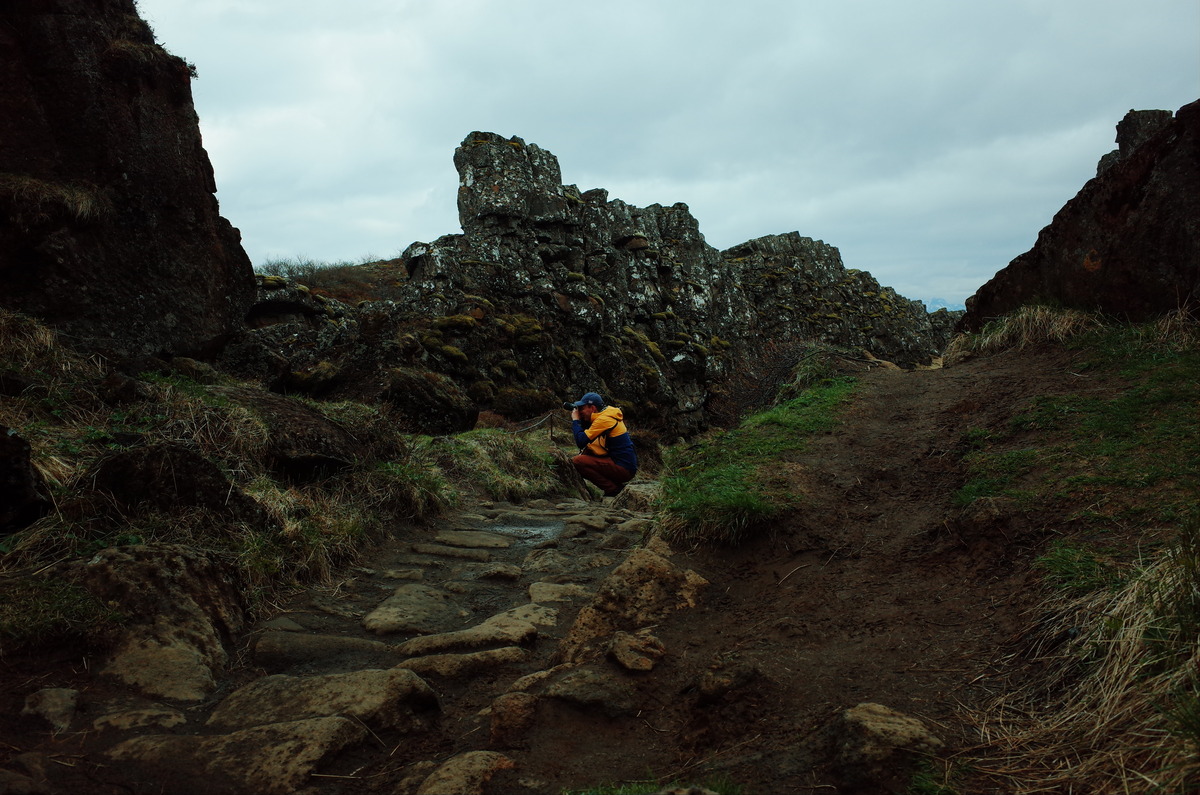
Reykjadalur Valley Hike
The Reykjadalur valley was less than an hour from Þingvellir National Park. Since Myles and I visited the valley in 2018, the entryway had been upgraded extensively. There was now a paved parking lot, with paid parking, instead of a gravel lot with a vacant structure. An immaculate cafe had been installed, which had bathrooms. A zipline was installed behind the cafe, which spanned a kilometer upwards to a tower along the nearby highway. Myles and I parked on the outskirts. Before we left the vehicle for the hike into the valley, I emptied my backpack asides from my GORE-TEX jacket, swim trunks, and a microfiber towel.
Another addition to the Reykjadalur valley were horseback rides. The paddock was past the zipline. From the paddock, a trail of horse manure followed Myles and I into the valley. The ascent took us through steep switchbacks, until we arrived at an overlook of a distant waterfall and wide canyon. Myles and I stopped off the path and took photographs of the waterfall from a ledge. As with the majority of places in Iceland, there were no safety ropes or fences. I set-up my field recorder on the overhang and captured the sound of the waterfall. From afar, the audio was muted but decipherable. I did, however, capture the laughter of nearby hikers.
Near the top of the valley, board pathways with steps shadowed the thermal river. Divided plank walls were available along the pathways to change behind. Myles didn’t want to go into the river but I did. I walked across a small bridge to the opposite side of the river and changed behind a vacant wall. As the temperature hovered in the forties, I quickly stripped three layers of gear, pulled on my trunks, and got into the river. The bed of the river was rocky, with beds of moss. The depth of the water was shallow, which caused my chest to be above the waterline. To my surprise, the water was similar in temperature to an average Jacuzzi.
Next to strangers, I sat in the water for ten minutes until I spotted Myles on a hill. With a chill, I exited the water and changed behind the nearby wall where I dropped my gear. With no bench to sit on, it was awkward to slip on wool baselayers. Once I was dressed, I walked to the upper ridge where Myles was. We followed a gravel path, which bordered the river, to the end of the valley. In 2018, the last time Myles and I had reached the end of the Reykjadalur valley, a layer of snow covered the area. The snow had masked a waterfall, which was tucked into a rocky gulley. We were able to get near the waterfall this time by crossing an eroded footpath.
Before we descended, Myles and I explored the head of the valley. A ledge with a steep drop off, accessible by a narrow footpath, provided a near panoramic view of the lush ridges, interspersed with beds of loose rocks. The footpath continued into a nearby range of hills, but Myles and I didn’t want to push our luck with the weather. The descent was slow, but without issue. Though on occassion, mounds of horse manure had to be side stepped. Before we returned to the vehicle, I paid the parking fee at an automated machine near the cafe. The fee was cheap, less than 1,000 Icelandic Króna, as the cost was 250 Icelandic Króna per hour.
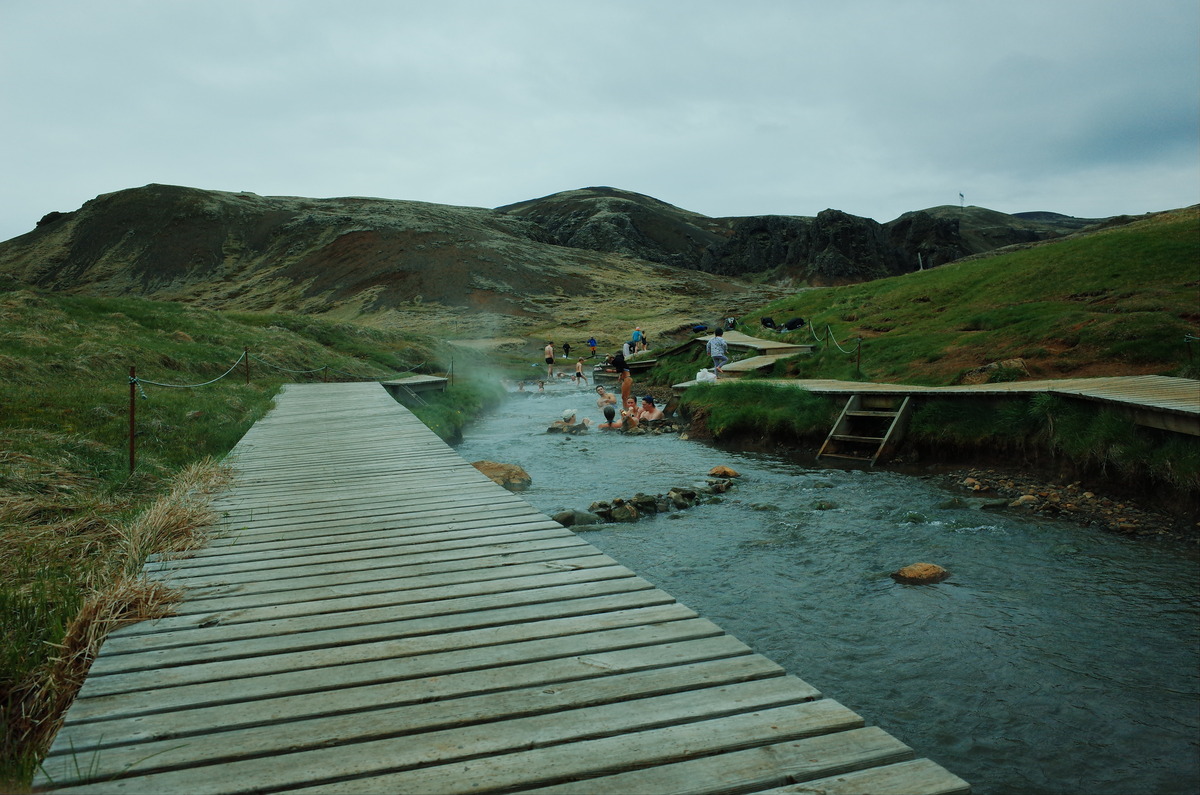
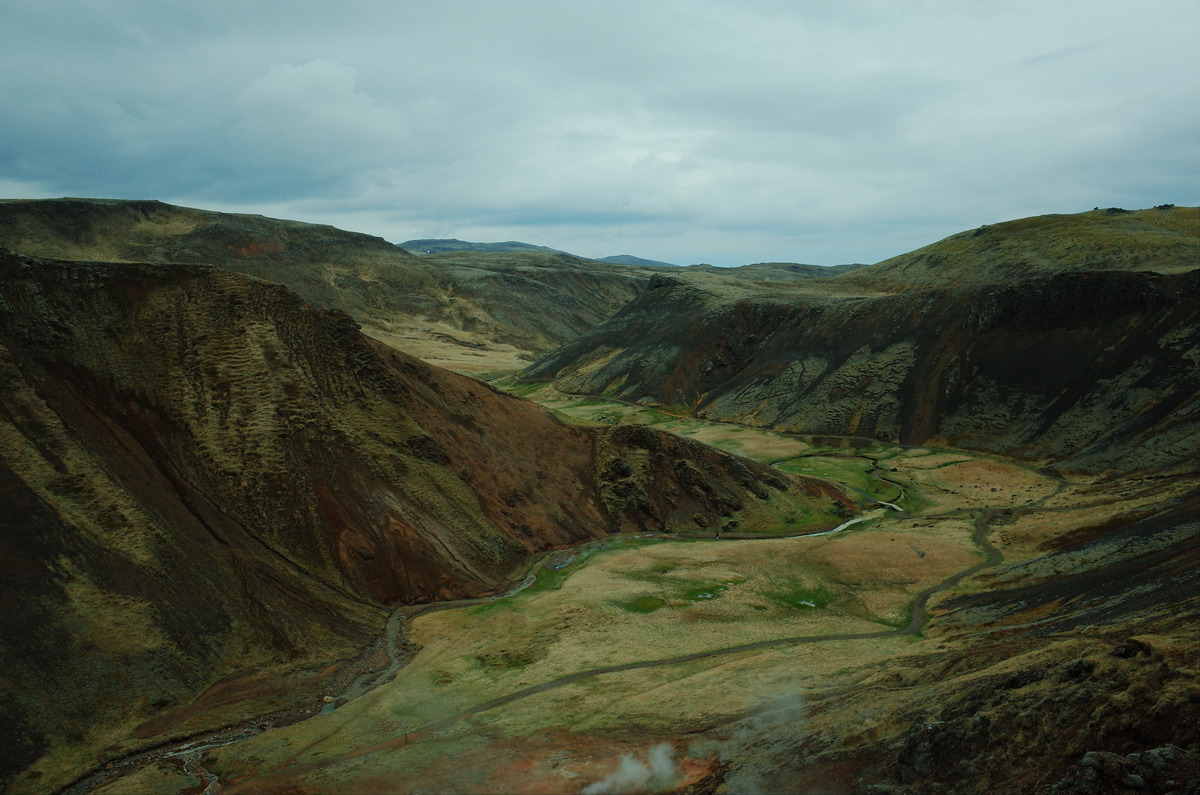
Lunch at Lindin
For lunch, Myles and I revisted Lindin, a restaurant in the quiet town of Laugarvatn. A server seated us near the door, with a view of Lake Laugarvatn. The tables, chairs, wallpaper, and aged frames along the walls painted a picture of home. I ordered a reindeer burger, with an espresso martini and a glass of ginger ale. Minus the martini, Myles placed the same order. After a day of travel and the onset of exploration, it was a welcomed meal. The martini, too, offset jet lag and the lack of sleep. Before we departed Lindin, Baldur Öxdal, the head chef, discussed food with Myles and I, and provided recommendations for hiking in Iceland.
Although late in the evening, Myles and I drove a half hour from Laugarvatn to Gullfoss before we returned to the hotel for the night. Situated east of the Golden Circle, Gullfoss is renowed as one of Iceland’s iconic waterfalls. The waterfall has two separate cascades, with a total drop of 105 feet. To our surprise, the parking area for Gullfoss was nearly deserted, with nearly no tourists or vehicles in sight. Parking near the closed gift shop, we descended 110 stairs to reach a footpath shrouded in constant mist. This path led to the lower lookout of the waterfall, where we observed the Hvítá river cascade to the plunge pool of Gullfoss.